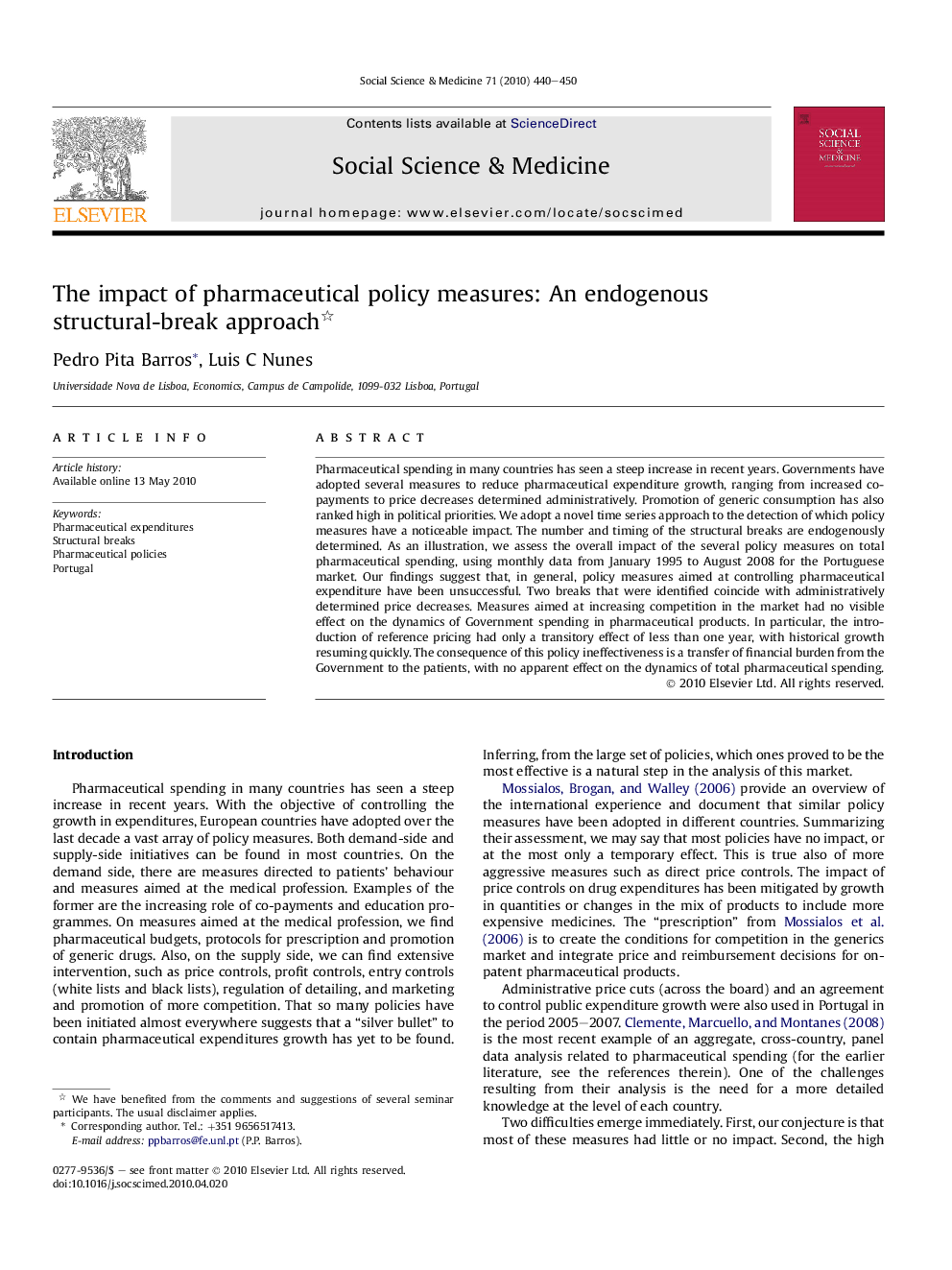| Article ID | Journal | Published Year | Pages | File Type |
|---|---|---|---|---|
| 953074 | Social Science & Medicine | 2010 | 11 Pages |
Pharmaceutical spending in many countries has seen a steep increase in recent years. Governments have adopted several measures to reduce pharmaceutical expenditure growth, ranging from increased co-payments to price decreases determined administratively. Promotion of generic consumption has also ranked high in political priorities. We adopt a novel time series approach to the detection of which policy measures have a noticeable impact. The number and timing of the structural breaks are endogenously determined. As an illustration, we assess the overall impact of the several policy measures on total pharmaceutical spending, using monthly data from January 1995 to August 2008 for the Portuguese market. Our findings suggest that, in general, policy measures aimed at controlling pharmaceutical expenditure have been unsuccessful. Two breaks that were identified coincide with administratively determined price decreases. Measures aimed at increasing competition in the market had no visible effect on the dynamics of Government spending in pharmaceutical products. In particular, the introduction of reference pricing had only a transitory effect of less than one year, with historical growth resuming quickly. The consequence of this policy ineffectiveness is a transfer of financial burden from the Government to the patients, with no apparent effect on the dynamics of total pharmaceutical spending.
